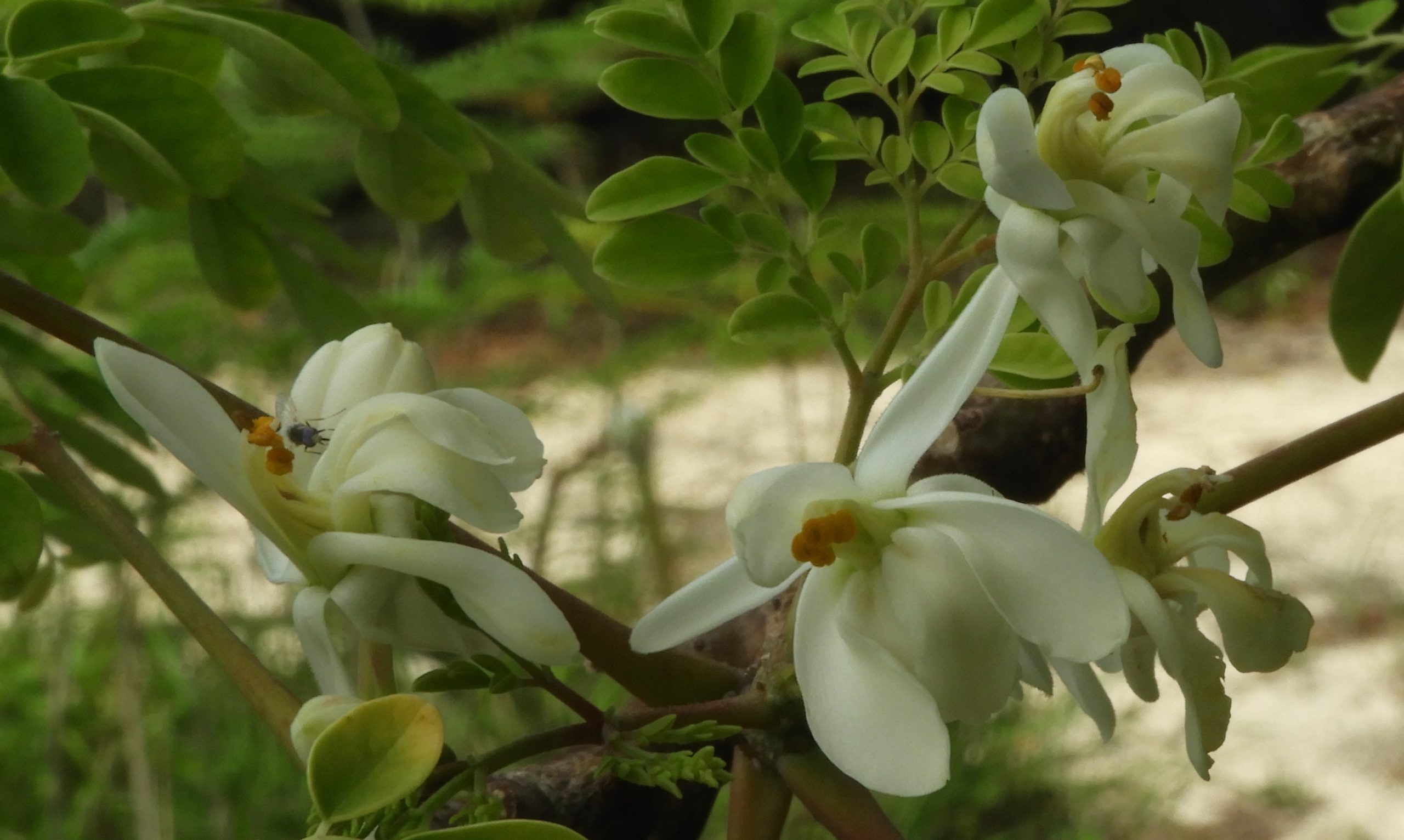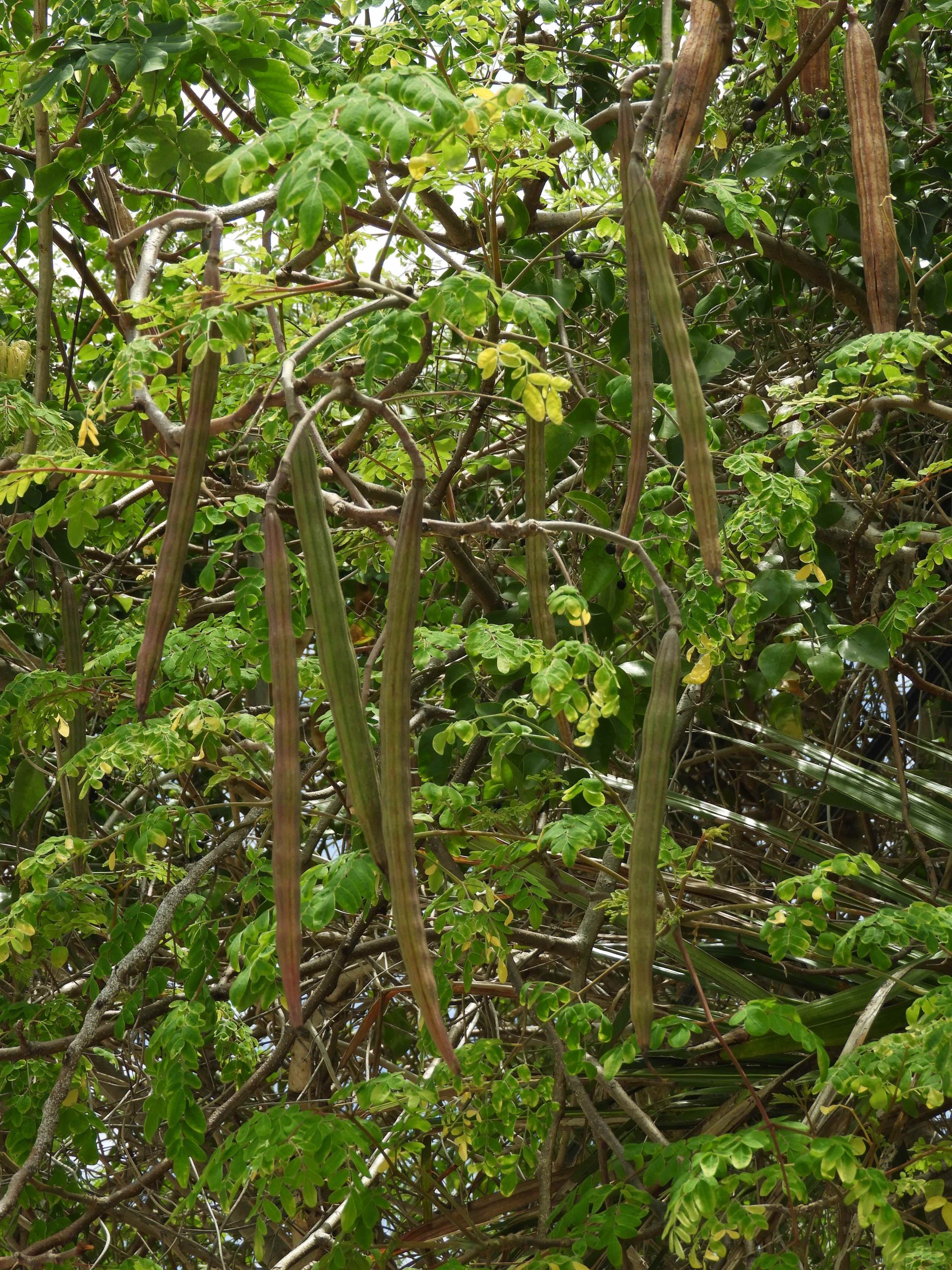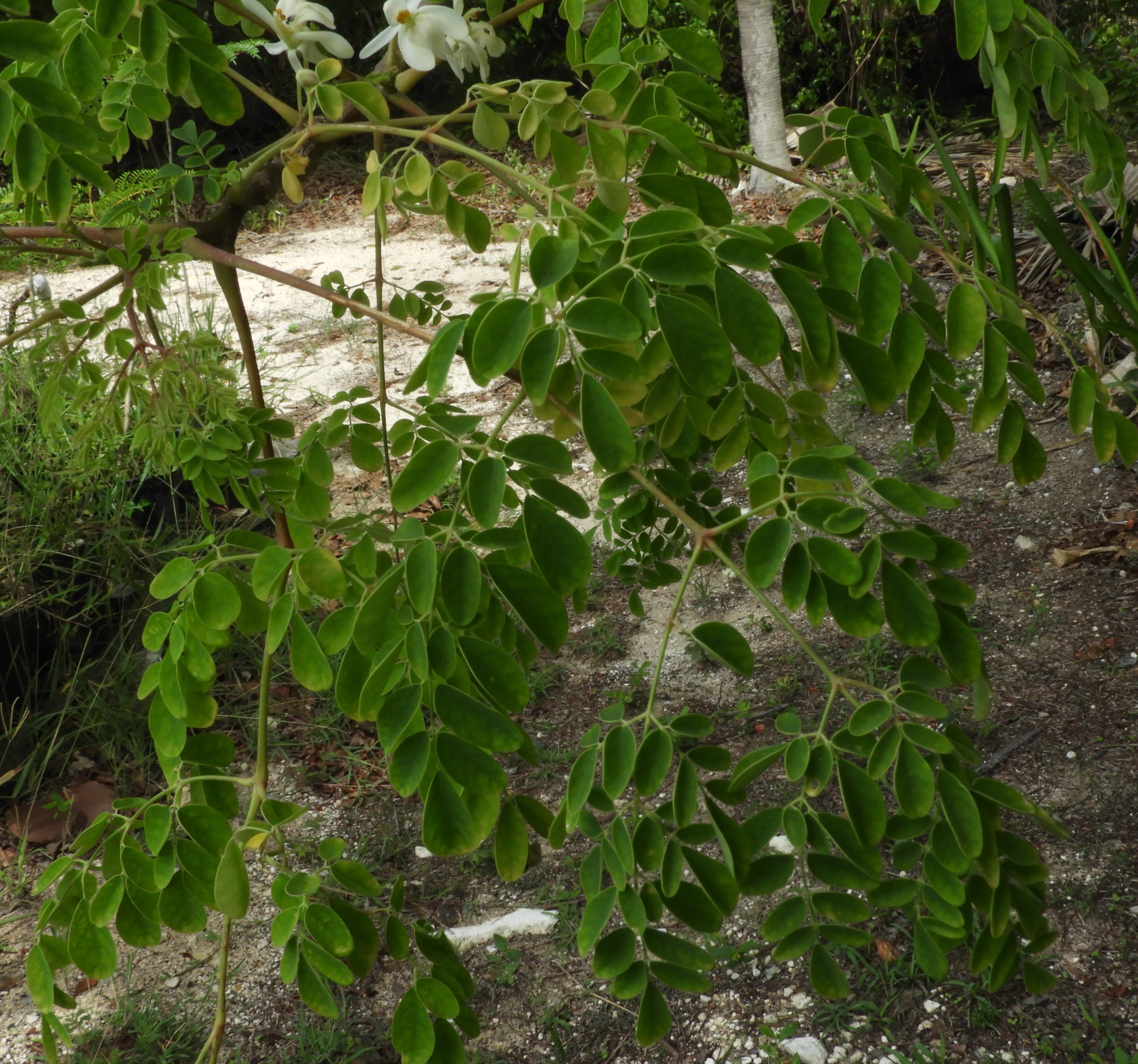Habit: Moringa oleifera grows as a shrub to small tree to 7 m in height. The stems and branches are not a hard wood. The tripinnately compound leaves are arranged alternately, up to 60 cm in length. The leaflets are elliptic to oblong, glabrous or pubescent, with a round or obtuse apex and an entire margin.
The complete, perfect, zygomorphic flowers are arranged in panicles from leaf axils. The calyx has 5, green, unfused sepals. The corolla has 5, white, unfused petals. There are 5 unfused stamens and 5 staminodes. The pubescent, superior ovary has 1 locule and numerous ovules. The fruit is an elongate hanging capsule at maturity.
Habitat: Moringa oleifera grows in Human Altered environments (yards and gardens).
Distribution: Moringa oleifera is NOT native to the Lucayan Archipelago but occurs on many of the island groupings. It is native to Indian subcontinent but is grown throughout the world in tropical and subtropical regions.
Medicinal/Cultural/Economic usage: Moringa oleifera is used in the Lucayan Archipelago to treat circulatory issues, and for colds and flus. It is widely used globally to treat asthma, diabetes, and the effects of menopause.
All parts of Moringa oleifera are considered useful and edible. The leaves, seeds, and roots can be cooked and eaten. It is high in protein and useful oils can be extracted. It has also been used to feed livestock and the remaining seed cake from oil extraction has been used for water purification.
Moringa oleifera is also used in the horticultural industry.



